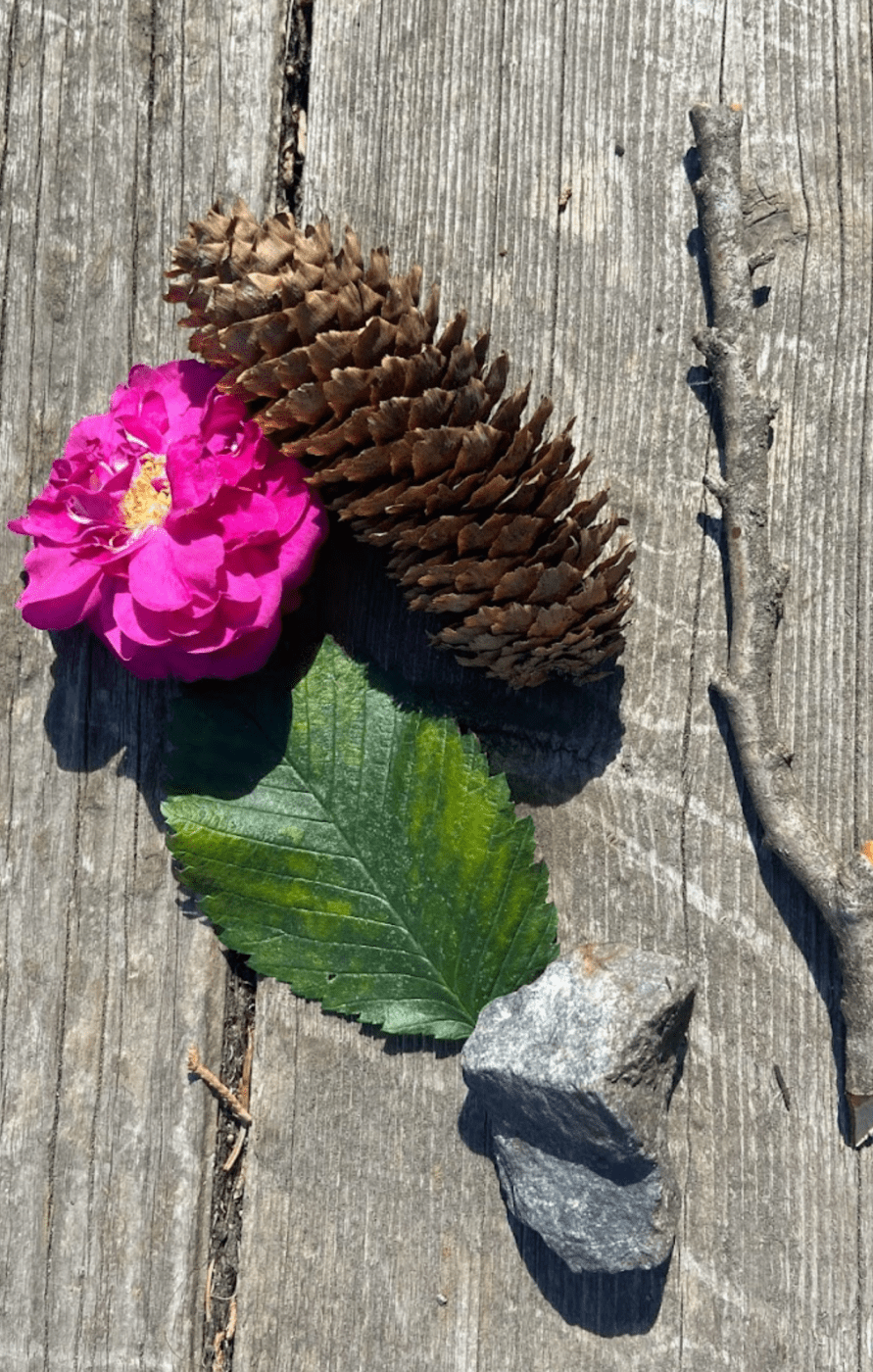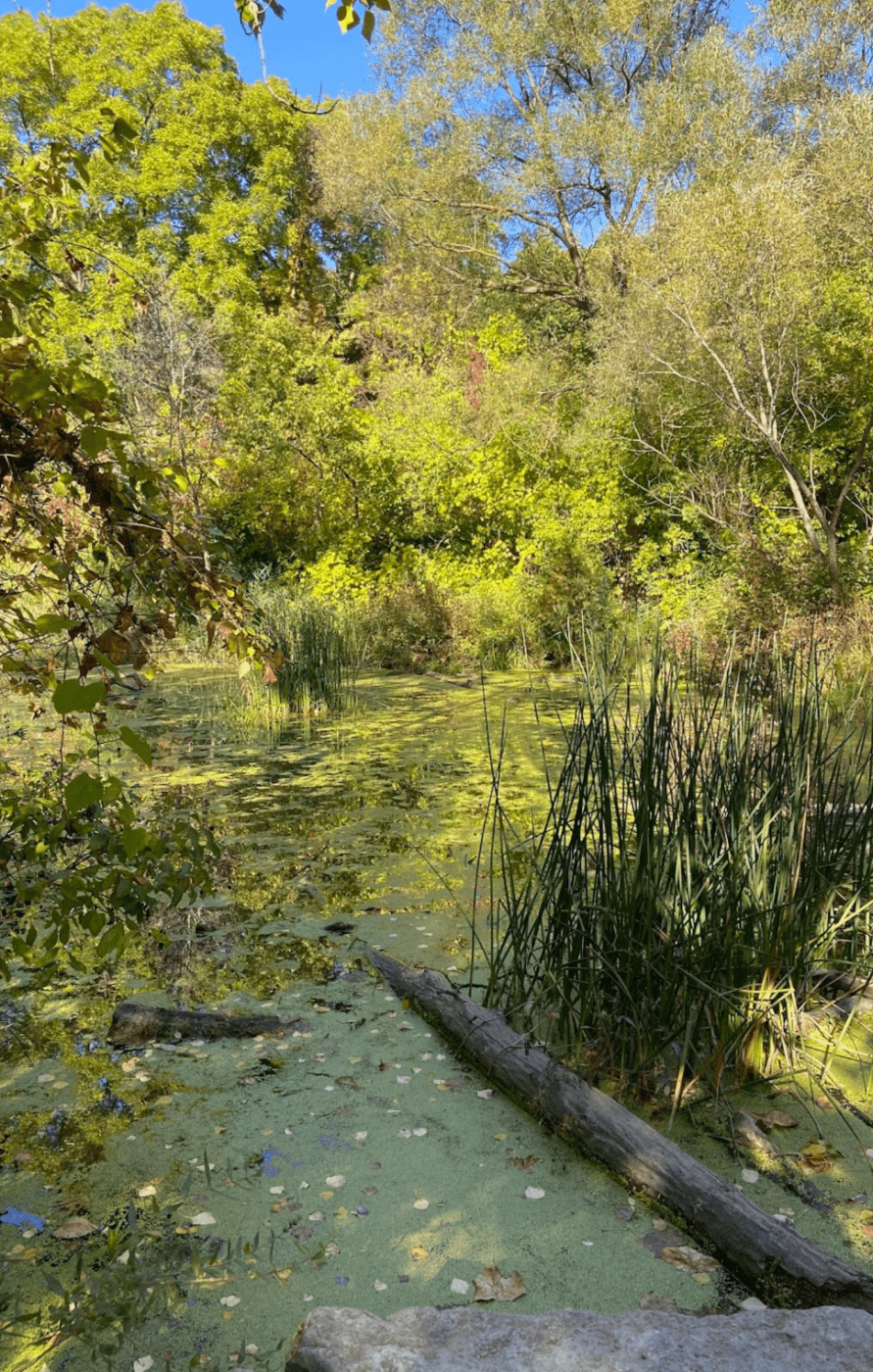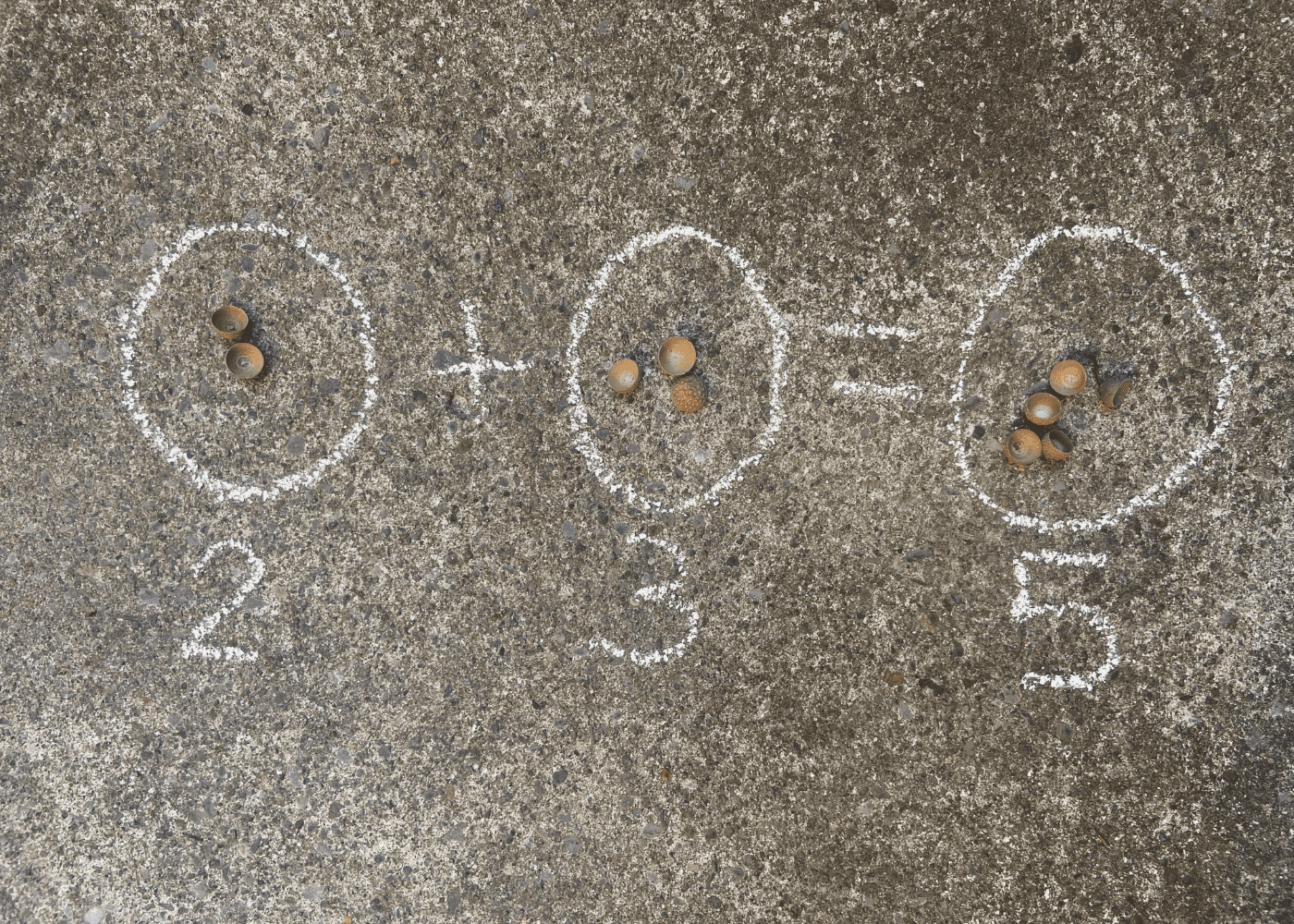Learning about numbers and counting is an important part of your child’s mathematical journey! By learning with nature, they can also explore outside while getting hands-on experience with counting practice.
Here are a few fun ideas for nature-themed counting activities that both parents and teachers can enjoy with their little ones! Each math activity listed below can be easily differentiated to suit the specific needs of your learners.
Note: When using natural materials, it’s important to chat with your young learners about what should and shouldn’t be used. We don’t want to harm anything living or take things from the environment that we don’t need. So, use what has already fallen, be sure not to walk on sensitive vegetation, and practice “leave no trace” principles!

1. Collecting leaves (or other objects)
I say leaves because it’s fall here and there is an abundance of leaves on the ground, but you could collect anything from the ground, like rocks, acorns, or twigs.
This is a great activity for younger children who are just starting to learn their numbers. The first time, have them go around and collect leaves, then count them as they put them in a pile or create a picture with them on the ground. You can even make it a race to see who can collect the most!
Another idea is to get them to pick up an assortment of items. Then, have them create ordered piles of each item (1 rock, 2 twigs, 3 pine cones, etc). Once they’re ready to learn how to write numbers, I would also suggest getting them to write the numbers underneath either in the dirt or with chalk.
2. Roll the dice: Nature counting race
If you have multiple learners, you could grab a pair of dice to create a simple counting race. This could be easily played with one child, too.
Steps:
- Agree on what you will be counting (trees, flowers, leaves, animals, etc.)
- Roll the dice to see how many of that item you need to find
- The person who finds enough of the item first wins!
This lets them practice counting and will help teach them how to read the numbers on a die. But, if you don’t have dice, don’t worry! Another way you could do this is by asking them to pick an object, giving them a time frame, and seeing who can find the most of each item.
3. Nature counting song
Singing a song can be another way to get little wons involved while having fun practicing counting. Try singing a nature-themed song together that focuses on counting.
Try a classic like The Ants Go Marching (listen here) while you’re outside… Can you do the actions while singing?
Another good one is Five Little Speckled Frogs (listen here).
I also love Jack Hartmann’s songs, like this one called “Five Little Fish.” Try checking YouTube if you still want other inspiration!

4. Nature scavenger hunt
This is a great activity for children who have established confidence in counting and can understand the rules of the game. Create a little list of things that can easily be found in your nature area (including photos or simple drawings, if you can!) and see if your child can find them. To do this I would give them a clipboard with the sheet on it and a marker to track what they find.
Here are some ideas:
- Find 5 trees
- Find 2 wild animals
- Find 3 bugs
- Find 10 flowers
- Find 8 pine cones
For vry confident learners, you could make it harder by asking them to count things in more detail, like finding a flower with only 5 flower petals!
If they know how to use tally marks, get them to keep track of their findings with tally marks.
5. Nature counting book
Nature math is fun on its own, but including books is a fun way to bridge learning between texts and the outdoors. I love to head outside and read in the grass, especially when the books are about nature. Then, after reading, you can ask your learners to decide on what they would like to practice counting. This lets them discover their interests and usually gets them more engaged.
If you need book ideas, I’d suggest checking out this book list on Epic! (Which is a super cool reading resource website). They recommend reading books like:
- National Geographic Little Kids Look & Learn: Count!
- The Twelve Days of Winter: A School Counting Book
- Counting the Stars: The Story of Katherine Johnson, NASA Mathematician
These are just a few on the list. And, if you head to their site some have audio options.

More ideas for math in nature
It doesn’t take much to create a beautiful math activity. So, if you’re looking for more creative family fun and math games you can play outside, head over to read my other post Ways to teach preschool math in nature (with printable!).
Other simple ways to practice counting in nature
1. Have your child count the different types of flowers, birds or trees you find on your next nature walk.
2. Collect acorns, pinecones, or stones. Then, have your child count and compare the sizes of their items.
3. Teach your child how to skip rocks and count the jumps.
4. Garden together and count the seeds out as you plant them.
5. Play nature bingo! Make a bingo board with nature items such as a tree, a cloud, a worm, etc. As you see the items on your walk, have your child check them off their list. The first one to get five in a row is the winner!
Why nature counting is important for preschoolers
Nature counting is important for preschoolers because it helps them develop an early understanding of numbers and quantity. By counting things in nature, such as leaves on a tree or stones in a stream, children can begin to see that numbers have meaning and can be used to represent quantities. This understanding lays the foundation for more complex math concepts later on.
In addition to being educational, nature-counting activities are also just plain fun! They can be done anywhere, anytime, and don’t require any special materials. Also, remember, you don’t need a large green space to find nature! Nature is all things living, so you can practice these activities in cities as well.
So next time you’re out for a nature walk with your preschooler, try incorporating some of these activities into your outing.
Which skills are you practicing with these activities?
By nature counting, children can learn about number recognition, one-to-one correspondence, and counting. These are essential math skills that lay the foundation for more complex mathematical concepts.
To learn more about these skills, read my post Preschool math concepts for early learners!
Tips for making nature counting even more fun and engaging for kids
Here are some ways you can keep your little ones engaged while learning outdoors:
1. Get them involved in the planning process. Ask them what they would like to count and involve them in deciding how you will do the activity. This will help them feel invested and excited about nature counting from the start.
2. Make it a game. Keep things fun and playful as you learn!
3. Get creative. Use nature counting as an opportunity to get creative and explore different ways of representing numbers. For example, you could use leaves to represent numbers or arrange stones in patterns.
4. Make it playful. Keep the activity light and fun by involving movement, song, or dramatic play.
5. Encourage collaboration. If you have multiple children, encourage them to work together on nature counting activities. This will help them bond as they share their nature counting experiences.
Conclusion
Whether you teach at a school or you have little ones at home, it’s nice to leave the home or classroom setting and take learning outside. With a little creativity, your children can practice counting, writing numbers, and exploring their own interests while outside. The best part? There are hardly any materials required (except for what they collect and gather)!
We would love to hear what your favorite nature math activities are.
Other math posts you may enjoy
Feel free to check out some of our other math posts for preschool and kindergarten-aged learners! Here’s a list:

